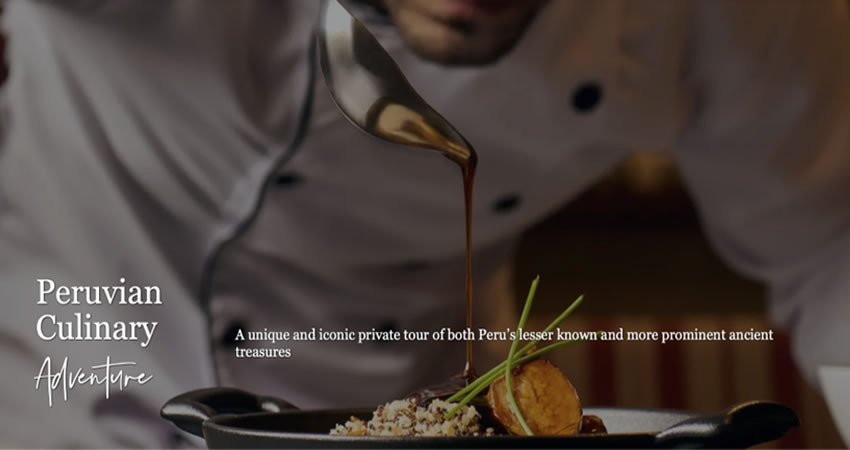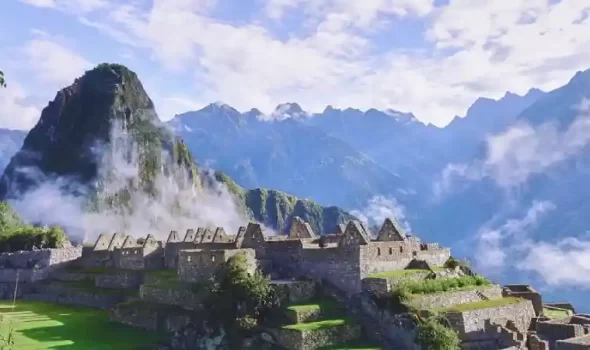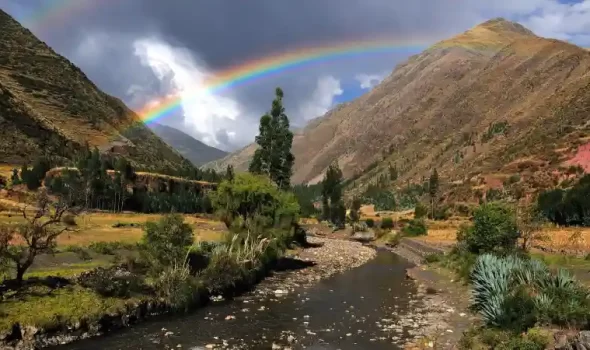
1.- HISTORICAL BACKGROUND
It is no news that Peruvian Fusion Food is popularly known as one of the most delicious gastronomic options in the world and this is because it is actually the reflection and at the same time materialization of the vast cultural and culinary heritage that exists within Peru where there are many traditions and cooking techniques that have been implemented during the process of history, in order to properly understand how it was created we must go back in time and explore the history of Peruvian Fusion Food thoroughly.
1.1.- Pre-Fusion Era
Long before the arrival of the Spanish there were pre-Columbian cultures that developed throughout the territory currently known as Peru, the last of them being the Inca culture, all these cultures developed a cooking method that incorporated local ingredients and this was because they had extensive knowledge of agriculture, thanks to this it was possible to obtain elements such as potatoes, corn, quinoa and a variety of fruits and tubers that for a long time were considered the basis for the preparation of food in the Andean region. Essentially they used techniques such as dehydration, fermentation and the use of fire both on the surface and in subway holes, which was not only part of their culinary tradition but also of their connection with the environment, part of the main indigenous foods were also based on other ingredients such as Chuño (dehydrated potato), Aji, river fish and certain fruits of the sea.
It is due to the arrival of the conquistadors that gastronomy underwent a change, it began to have European influence adding crucial ingredients such as pork, chicken, rice and other spices that were arriving progressively. Thanks to this is that a Chinese colony chose to migrate to Peru also implementing in this way cooking techniques such as the popular stir-fry, all these mixtures finally resulted in the Peruvian Fusion Food which had as its essence to reinterpret the traditional dishes and add certain foreign touches allowing the Peruvian Fusion Food could reach its maximum splendor.
2.- PERUVIAN FUSION FOOD STYLES
2.1.- Nikkei Style
To no one is a surprise that Peru is considered as an outstanding country when it comes to Peruvian Fusion Food options, among these is the Nikkei cuisine, a fusion of techniques and styles that contains Japanese and Peruvian influence, during the last years it has become a well known and very popular trend allowing many restaurants to look for its place among the existing ones, Nikkei cuisine combines in a harmonious way two cultures that are very different and although many people feel that this type of Peruvian Fusion Food is a characteristic that identifies Peruvian cuisine, it is always in constant change as well as seeking to experiment with the dishes, among the main restaurants that have innovated with this type of Peruvian Fusion Food is the restaurant Maido. Something peculiar that many do not know is that Nikkei is known as the second generation cuisine, that is to say families that have Asian ancestry implement their style of cooking with Peruvian cuisine and within their dishes highlights the presence of rice and fish as this is the basis of many Japanese recipes, you can enjoy among the popular maquis, sashimi, tiradito and many other similar options.

| “To travel is to live more than one life in one.” |
2.2.- Chifa Style
It is considered as the most popular Peruvian Food Fusion in the Peruvian territory since it is the main choice when it comes to sharing among large families, this type of cuisine is created from the Chinese influence with the Peruvian cooking style because before the twentieth century many immigrants from Asia migrated to Peru and brought with them this peculiar culinary style. This mixture is one of the most incredible since at the same time of altering the preparation it also involves native elements of the Asian culture and nowadays it is part of the Peruvian Fusion Food most consumed on a daily basis. It is incredible to see how there are so many restaurants that are dedicated to the production and sale of this type of Peruvian Fusion Food and although initially originated in the capital of the country have been migrating to all the cities thus becoming one of the favorite dishes around the world even has earned a place as an accompaniment to the flag dish of Peru which is the ceviche, however not only stays with rice can also have varieties such as noodle stir-fry or the popular Wantan soup.

2.3.- Creole Style
Although it is one of the most traditional styles that exists in Peru, the reality is that its very name directs it to the combination of ingredients, this Peruvian Fusion Food has a greater presence of Peruvian technique but maintains other influences such as indigenous, African and European as it is a mixture of everything. Many of the dishes prepared under this style have a base of foreign technique as is the case of the “salteado” provided by the Chinese creating the lomo saltado, can also be reflected in the taste for the cream sauce brought by the Europeans who poured it on top of the cooked potato giving origin to the popular Huancaina potato, let’s not forget the Africans who gave life to the popular Taku Taku due to the taste of eating rice combined with beans, without a doubt the Creole cuisine is unique in its kind combining unique flavors that you can’t really find anywhere else in the world. This cuisine destination is one of those that best preserves the culinary tradition from pre-Columbian cultures to contemporary times and even having the foreign influence kept the essence of the flavor thus obtaining a predominant place and being considered as a symbol of cultural identity.

2.4.- Cebiche Style
The country’s flagship dish is also considered as part of the Peruvian Food Fusion since it has a certain degree of Japanese influence in which fresh and raw fish is consumed in the form of sashimi, with the difference that in Peru lemon juice is added as a way to marinate and also finds the splendor of its flavor when combined with local ingredients such as sweet potato, corn, chili and onion. All this has allowed it to earn its place as Peru’s flagship dish and, historically speaking, the Moche culture is responsible for its creation because of the location where they were located, they had greater access to this maritime resource, of course it was very much in their own style.

2.5.- Novo-Andean Cuisine
During the 80’s it was chef Bernardo Roca Rey Miro Quesada who imposed the need to renew the traditional cuisine basing everything on traditional ingredients that were usually only used by ancestors and pre-Columbian cultures, it is in this way that after incorporating Andean elements to his style of cooking as well as foreign products he created the Novo-Andean cuisine that gave a great impact on the diners since its flavor was very peculiar and really new to the palate, It sought to reinterpret the traditional dishes so that they could express a new sensation among its customers and with the passage of time it earned its place and is currently considered one of the best culinary techniques in the country.

2.6.- Italian Influence
It is also worth mentioning that Italian gastronomy had a great impact on the Peruvian style of cooking and in order to highlight its contribution to the creation of Peruvian Fusion Food, it should be remembered that during the year 1840 there was a great wave of immigrants coming from the Italian country, thanks to this the habit of consuming pasta was incorporated into the traditional diet, resulting in dishes that are currently very popular such as noodles with chicken and even noodles in green sauce, always very much in the style of the Italian technique.

7.- A TRADITIONAL WAY OF FOOD
“One of the most peculiar Andean cooking methods that exists is the Pachamanca, which is to make a hole in the ground and place a layer of hot stones in the form of a stove, then place the desired food and finally cover it with aromatic herbs, this is not only to preserve the flavor or nutrients but is directly linked to aspects of gratitude to mother earth also known as pachamama.”
8.7.- FAQs PERUVIAN FUSION FOOD
- What exactly is Peruvian fusion cuisine?
Peruvian Food Fusion is Peruvian cuisine that has adopted foreign influences as part of its preparation resulting in a uniquely flavored dish that can be enjoyed at any time of the day.
- How is Peruvian fusion food different from traditional Peruvian food?
Essentially in the preparation, while traditional cuisine follows an established recipe and some grandmother’s secrets, Peruvian Fusion Food is more of an improvisation during its preparation allowing the flavor to vary distinctively between dishes.
- When did Peruvian fusion cuisine begin?
It is known that the first foreign influence on local food was the arrival of the Spaniards, who introduced techniques and at the same time ingredients creating a mixture of flavors and consequently the Peruvian Food Fusion.
- Why is Peru considered a gastronomic capital?
Peru is one of the most culturally and ethnically diverse countries in the world, this has allowed each person to contribute a bit of their native knowledge making the existing flavors within the Peruvian gastronomy unlimited, this is why Peruvian Fusion Food is so popular among travelers as they notice a certain familiarity and nostalgia when tasting it.
- Which Chifa dishes are must-try?
The Arroz Chaufa is one of the most popular dishes that exists within the Peruvian Food Fusion, naturally has several varieties among which we recommend you try is the Tipakay or Limonkay (If you like mixed flavors between sweet and salty), there are also other varieties such as Chijaukai and chicken with asparagus (for those who prefer traditionally salty flavors).

Visiting Peru and not giving yourself enough time to enjoy Peruvian Fusion Food is synonymous with not having traveled at all. The flavors that await you are unique and we assure you that your palate will never forget it. Auri Peru seeks to create an unforgettable experience for you with a personalized and tailor-made service, contact us and find out how to get it.
“Travel is the best way to get lost and find yourself at the same time.”





















